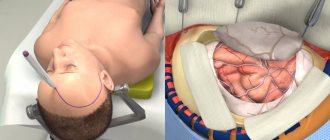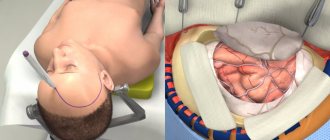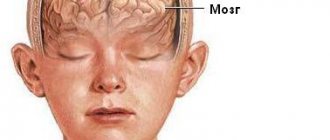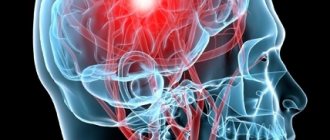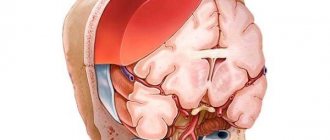Skull fractures are among the most severe injuries. Such damage to the integrity of the cranial bones occurs after severe blows to the head and is often accompanied by brain damage. Therefore, these injuries are life-threatening. And even with a favorable outcome, they have serious consequences for the patient’s health. It is very important that first aid for a traumatic brain injury is provided on time. This will help prevent death. But in any case, the treatment of such injuries is very long and requires complex rehabilitation.
Features of skull fractures
Traumatic brain injuries are very common, especially in young and middle age. They cause about half of the deaths among all injuries. This is due to the fact that a violation of the integrity of the cranial bones often leads to compression or damage to the brain and blood vessels. In addition, the skull has a very complex structure. Many bones are connected by sutures and have different structures and thicknesses. Some bones are penetrated by blood vessels or have air cavities. There are facial and cerebral sections of the skull. It is in the brain that injuries most often occur.
The peculiarity of fractures of the cranial bones is that upon impact, external damage may not be noticeable. After all, the cranial vault consists of internal and external plates, between which there is a spongy substance. The inner plate is very fragile, so upon impact it is most often damaged, even without damaging the integrity of the outer plate.
Classification
According to their prevalence, they distinguish between combined and isolated fractures, and according to the type of damage - linear (longitudinal, transverse, oblique), comminuted and depressed. With combined lesions, the fracture line extends from the cranial vault to its base; with isolated lesions, only the base is affected, and the vault remains intact. Based on their location, fractures of the posterior, middle and anterior cranial fossa are distinguished. The middle fossa is most often affected (about 70%), while longitudinal damage to the temporal bone predominates. Due to the formation of communication with the environment, all fractures of this group are considered as open, penetrating.
Causes of such injuries
Skull fractures occur as a result of the application of great force. They most often affect young and middle-aged people who lead an active life or play sports. As well as alcoholics, drug addicts and representatives of criminal structures. There are several reasons why skull fractures occur:
- strong blows to the head with a hard object;
- falling from a height;
- car crashes;
- gunshot wound.
There are two mechanisms for obtaining such an injury: direct and indirect. When a bone breaks where force is applied, it is a direct fracture. This is how cranial vault injuries usually occur. Damaged bones are often pressed inward and damage the meninges. With an indirect fracture, the impact is transferred from other bones. For example, when falling from a height onto the pelvis or legs, a strong blow is transmitted through the spine to the base of the skull, often leading to a fracture.
General information
A fracture of the base of the skull is detected quite rarely, accounting for about 4% of the total number of severe TBIs, and is often diagnosed as part of a combined or combined injury. In 32-59% of patients, the fracture line passes from the arch to the base. Among the patients, young, physically active people and representatives of socially disadvantaged sections of the population predominate. The male to female ratio is approximately 3.5:1. In children, due to the high plasticity of bone structures, trauma is rarely diagnosed, usually in schoolchildren. The damage is often accompanied by severe brain contusion, which negatively affects the prognosis and increases mortality, especially with combined skull fractures with damage to the base and vault.
Fracture of the base of the skull
Symptoms of skull fractures
The patient’s further condition depends on how correctly first aid was provided for a traumatic brain injury. With any strong blow to the head area, you should suspect the possibility of a fracture of the skull bones. After all, sometimes such an injury is not accompanied by clearly visible symptoms. But there are also special signs that can be used to determine not only the presence of a fracture, but sometimes its location and damage to the meninges.
- The main symptom of a skull fracture is impaired consciousness. This may include fainting or coma, memory loss, confusion, or hallucinations.
- In addition, skull fractures are always accompanied by severe headaches, dizziness, and nausea.
- When the brain and nerve fibers are damaged, sensory disturbances, paresis and paralysis are observed.
- If the fracture affects the brain stem, breathing may be difficult and blood circulation may be impaired.
- With a fracture of the base of the skull, hematomas around the eyes or in the mastoid area are often a characteristic symptom. There may be bleeding with cerebrospinal fluid from the nose and ears.
- A fracture of the temporal bone is considered a very serious injury. It causes severe dizziness, loss of coordination, nausea, hearing loss, and facial paralysis.
Causes of the pathological process
Fracture of the bones forming the base of the skull can only occur as a result of brute mechanical force. In this case, several bones may be fractured at once (ethmoid, sphenoid, temporal and occipital).
The danger of a fracture lies in the close proximity of the brain and spinal cord, which can result in serious complications.
A fracture of the base of the skull can occur in the following situations:
- Traffic accident , especially when the accident occurs as a result of a head-on collision of a vehicle. Driving at high speeds and while intoxicated increases the likelihood of injury;
- Falling upside down;
- Fights with direct blows to the lower jaw and bridge of the nose. Most of these brawls are committed under the influence of alcohol or drugs;
- Hitting your head on hard objects and surfaces.
Classification of skull fractures
Injuries to the cranial bones can be different. They are classified according to the nature of the fracture, location, and severity of the lesion. Various parts of the skull may be affected. Based on the nature of the injury, there are three types:
- the most severe is a comminuted fracture, which can result in damage to the meninges and blood vessels;
- a depressed fracture also has serious consequences, because with it the bones of the skull are pressed inward, which causes crushing of the brain;
- linear fractures are considered harmless, since there is no displacement of bone fragments, but they can cause damage to blood vessels and the appearance of hematomas;
- very rarely, a perforated fracture occurs as a result of a gunshot wound; as a rule, such an injury is incompatible with life.
Based on the location of the injury, a fracture of the temporal bone, occipital or frontal is distinguished. They refer to cranial vault injuries. If the base of the skull is damaged, this causes cracks in the facial bones, which spread to the eye sockets, bridge of the nose and even the ear canal. In addition, a fracture of the skull bones can be open or closed, single or multiple. The patient’s condition depends on the severity of the injury, the degree of damage to the meninges and blood vessels, as well as on the timely medical care provided.
Treatment
Once the diagnosis has been established and the existing injuries have been assessed, emergency treatment for a basal skull fracture begins. It consists of several stages and can be conservative or surgical.
Basics
The first stage is treatment aimed at eliminating life-threatening symptoms and restoring bone integrity. Conservative therapy can be carried out only in the case of simple linear fractures without displacement or depression of fragments.
The patient requires complete rest, strict bed rest, and a therapeutic diet. Drug treatment includes the use of the following drugs:
- infusion therapy - solutions of glucose, sodium chloride, polyglucans;
- diuretics - to prevent the development of cerebral edema;
- means for normalizing cardiac activity;
- if a brain contusion and a fracture of the base of the skull occur simultaneously, the introduction of nootropics, means for restoring nerve cells, is required.
The duration of the patient's stay on bed rest depends on the severity of the injury, but is always at least three weeks.
Surgical treatment is required in cases where there are complicated fractures. The fragments are compared and osteosynthesis is performed using screws and metal plates. After this, drug therapy is prescribed to eliminate brain damage. The treatment time for patients with complicated fractures increases significantly.
Video in this article:
Nursing care for a fracture of the base of the skull is of great importance in the management of such patients. Patients must be placed on strict bed rest, meaning they are not allowed to even sit up in bed. Therefore, there should be a nurse near the patient - albeit not constantly, but with the possibility of visiting him regularly.
Recovery period
After the main symptoms have been eliminated and the integrity of the bones has been restored, rehabilitation after a fracture of the base of the skull begins. It is necessary for the social adaptation of the victim, restoration of motor activity and other impaired functions.
Rehabilitation includes therapeutic exercises, massage, and work with a psychologist. If necessary, treatment is provided by a neurologist.
Calvarial fracture
Occurs from a blow to the scalp. Therefore, the main symptom of such an injury is a wound or hematoma in this place. But the difficulty of diagnosing this injury is that the impact often damages the inner plate of the cranial bone, which is almost invisible from the outside. The patient may even regain consciousness, but gradually the symptoms of brain damage will increase. A fracture of the skull vault can occur for various reasons, most often due to an impact. People under the influence of alcohol and drugs are especially susceptible to such injuries. Indirect impact, for example from a fall on the pelvis, may be accompanied by a fracture of the base of the skull. In this case, the patient's condition is especially serious, and the injury can be fatal.
Diagnostics
Patients with fractures and head injuries undergo a complex of diagnostic examinations, which include:
- collection and analysis of complaints;
- mandatory examination by several specialists;
- instrumental diagnostic methods;
- laboratory research.
A fracture of the base of the skull requires clarification of the mechanism of the injury and determination of its severity. Interviewing the patient or relatives, the type of impairment of consciousness, the presence of focal symptoms, and examination data make it possible to judge the severity of the injury and choose treatment tactics.
Trauma to brain tissue is accompanied by intracranial hemorrhages, in the diagnosis of which lumbar puncture plays an important role. Cerebrospinal fluid analysis evaluates several parameters. In case of severe injuries, victims undergo radiography and contrast angiography of the cerebral vessels. This will clarify the location of the fracture, morphological structure, and determine the presence of a hematoma.
Computed tomography is used to determine:
- intracranial hematomas;
- fractures;
- localization of the lesion;
- degree of brain compression;
- presence of edema;
- damage to the meninges.
Computed tomography is the method of choice for an accurate diagnosis of basal skull fracture. Severe injuries are often accompanied by the development of shock, which is an obstacle to instrumental research. In such cases, only the clinical picture remains a diagnostic criterion, and after stabilization of the condition, it is confirmed by additional diagnostic methods.
Fracture of the base of the skull
Survival from such injuries depends on timely medical care. A fracture in this location can be independent or accompany a trauma to the cranial vault. In addition, a fracture of the anterior, middle and posterior cranial fossa is distinguished. Such injuries, depending on the location and severity, are accompanied by bleeding from the nose and ears, and leakage of cerebrospinal fluid. A characteristic symptom of a fracture of the anterior cranial fossa is bruising around the eyes. With such injuries, all the patient’s senses are affected: vision, hearing, smell, and coordination of movements are impaired. A fracture of the base of the skull is considered a very serious injury. The survival rate for it is approximately 50%.
Symptoms of injury
Manifestations of damage can be varied depending on the location and severity of the injury.
Linear fractures are the most common and easily treatable injuries to the bones of the skull. Often the injury cannot be seen on an x-ray. In this case, doctors rely on external signs: a hematoma forms on the periorbital tissue, a bruise may appear in the area of the mastoid process.
A skull fracture, as a rule, is accompanied by a disturbance of consciousness of varying severity, from a short fainting that occurs at the time of injury to a long-term deep coma. Typically, the severity of this symptom is directly related to the extent of the injury. This rule does not apply to cases where an intracranial hematoma forms. This complication is manifested by alternating periods of clear consciousness and fainting.
If the fragments damage the nerves of the skull or the structure of the brain, sensitivity may be impaired, including paralysis. After injury, cerebral edema may occur. Then the clinical picture is complemented by intense pain, nausea and vomiting.
If the fracture of the base of the skull is localized in the anterior cranial fossa, dark bruises appear on the skin around the eyes within half a day (symptom of “glasses”). The injury is accompanied by a bruise on the back of the throat. CSF mixed with blood pours out through the nose. Cerebrospinal fluid may ooze from the ears when the fracture involves the middle cranial fossa. Such signs give grounds to classify the injury as an open penetrating injury. A fracture of the sphenoid bone leads to bleeding from the mouth and nose at the same time.
A significant proportion of injuries to the base of the skull are fractures of the middle cranial fossa. The damage causes bleeding from one ear, and hearing sharply decreases or disappears. Cerebral fluid pours out through the auricle if the integrity of the eardrum is damaged. The victim cannot maintain balance and notes some loss of taste.
Damage to the posterior fossa is accompanied by injury to the brain stem, causing difficulty breathing and the formation of bruises over the mastoid processes. Paresis of the muscles of the larynx and tongue may occur.
IMPORTANT! A skull fracture in a child may initially be asymptomatic, and only after a while the general condition of the victim begins to deteriorate.
Trauma to the skull bones of any location can be accompanied by surges in blood pressure, heart rhythm disturbances, and involuntary urination. The victim's pupils may be of different sizes, but may not respond to light.
Diagnosis of injuries
For any traumatic brain injury, an examination is performed to rule out a fracture. In addition to questioning the victim or his accompanying persons about the circumstances of the injury, the doctor examines the patient. Sensitivity, the presence of reflexes are assessed, the pulse and the reaction of the pupils to light are checked. An X-ray of the skull is also taken in two projections. To confirm the diagnosis, the results of magnetic resonance and computed tomography, brain puncture and echoencephalography are used. Such a study must be carried out even in the absence of visible consequences of injury, since after an impact only the inner plate of the skull bones can be damaged.
The most common head injuries
When a head injury occurs, the following types of disorders occur:
- damage to the surface of the head;
- injury;
- skull fracture.
There are no specific symptoms that differentiate a head contusion from a fracture. It is impossible to diagnose the nature of the injury on your own. If you suspect even a minor head injury, you must go to the hospital. There are traumatic brain injuries that are initially asymptomatic and then lead to irreversible consequences, including death.
Features of skull fractures in children
Despite the belief of many that a child’s cranial bones are stronger, such injuries often occur in children. Moreover, their diagnosis is difficult, and the consequences are usually more serious. A skull fracture in a child is dangerous because the victim may feel well immediately after the injury. This is due to insufficient development of the frontal lobes and other parts of the brain. The consequences appear later: a strong increase in blood pressure, loss of consciousness, vomiting, anxiety, tearfulness. Features of skull injuries in children are multiple linear cracks, suture dehiscence and bone depression. Less common than in adults are comminuted fractures, hematomas and hemorrhages. But complications can be just as serious: epilepsy, hydrocephalus, developmental delays, visual and hearing impairments often develop.
Prognosis and prevention
The prognosis for injuries to the base of the skull is determined by the severity of the TBI. With isolated injuries, mortality reaches 28.9%, in 55-60% of patients the outcome is moderate disability, 5% of injuries result in severe disability, in other cases there is a good recovery. With simultaneous fractures of the vault and base of the skull, the prognosis worsens; in 44.7% of cases, the death of the victims is observed. Prevention includes the prevention of domestic injuries and road accidents, compliance with safety regulations at work and when engaging in dangerous sports.
First aid
When a traumatic brain injury occurs, it is very important how quickly the victim receives medical assistance. Often his life depends on it. Until the victim is taken to the hospital, he must be laid on a hard surface without a pillow, his head supported with soft objects. If he is conscious, he can lie on his back. If the victim faints, turn him on his side, supporting his head with pillows so that he does not choke when vomiting. It is advisable to remove all jewelry, glasses, dentures, and unbutton clothes. The victim must be provided with free access to air.
If a head injury bleeds, cover it with a sterile bandage and apply ice, but do not touch or put pressure on the injury site. It is not recommended to give the patient any medications before the doctor arrives, since, for example, narcotic analgesics can cause breathing problems. The victim should be taken to a doctor as soon as possible, even if he is conscious and feels normal. After all, skull injuries never go away without leaving a trace. And without timely treatment, they can cause serious consequences.
Care and rehabilitation
The following rehabilitation measures are taken to help a person return to normal life:
- neuropsychological correction (restoration of attention, memory);
- classes with a speech therapist;
- classes to restore motor activity;
- physiotherapy (restoration of brain activity);
- following a special diet;
- psychological recovery (conversations with a psychologist and family), etc.
The rehabilitation period lasts about 1.5-2 years. At this time, the patient has a chance to recover. After this time, recovery will be more difficult and less effective.
Features of treatment of skull fractures
A victim with a traumatic brain injury must be hospitalized. Depending on the severity and location of the injury, conservative or surgical treatment may be prescribed. Bed rest is mandatory. The head should be slightly elevated to reduce the leakage of cerebrospinal fluid. In case of trauma to the base of the skull, a lumbar puncture or drainage is necessary. For fractures of moderate and mild severity, drug therapy is carried out. The patient is prescribed the following medications:
- painkillers, non-steroidal anti-inflammatory drugs;
- diuretics;
- antibiotics to exclude purulent infection;
- nootropic and vasotropic agents;
- drugs to improve cerebral circulation.
If the fracture is severe, for example comminuted or depressed, with multiple bone damage, then surgical treatment is performed. It is needed to remove fragments and areas of necrotic tissue, as well as accumulated blood. During the operation, damage to nerves and blood vessels is also eliminated. Surgical treatment is used if purulent infection has begun, which is not eliminated with conservative therapy.
Lifestyle after injury
A basal skull fracture is a serious injury that undoubtedly has a major impact on the patient's lifestyle. Immediately after receiving an injury, regardless of its severity, the person is hospitalized in the neurosurgical department. During this time, it is necessary to observe strict bed rest.
A patient with a minor injury requires assistance with self-care. With a severe fracture of the base of the skull, the patient requires careful and complete care.
After the victim is discharged, his lifestyle also differs from his usual one. If the patient had an uncomplicated fracture, then he needs to adhere to the following lifestyle:
- Avoid physical activity for the first 6 months after injury;
- Alternating periods of sleep and wakefulness. Daytime rest and sleep are required;
- Take walks in the fresh air;
- Maintain proper nutrition. It should be dietary and easily digestible. You should completely avoid drinks containing caffeine;
- Quitting bad habits (smoking, drinking alcohol).
After a severe fracture, the patient’s lifestyle changes dramatically. In this case, you will need the help of loved ones. Patients with partial paralysis need to learn to care for themselves in new conditions. After severe brain damage, patients cannot return to their usual way of life.
The consequences of such injuries
If the skull fracture is linear, without displacement of bones or large hematomas, and also if purulent infection has been avoided, then the prognosis for recovery is usually favorable. But a skull fracture does not always go away without complications. The consequences of such an injury can be very serious:
- meningitis, encephalitis;
- intracerebral hematomas can lead to encephalopathy;
- excessive bleeding most often ends in death;
- after a comminuted fracture of the base of the skull, paralysis of the entire body may develop;
- Patients often suffer from psychological and emotional disorders and decreased mental abilities.
Consequences and prognosis
As with any traumatic brain injury, the patient’s quality of life largely depends on the severity of the injury suffered and how first aid was provided. If the fracture was uncomplicated, without displacement, and purulent complications were prevented, recovery occurs quickly and the prognosis is favorable for the patient.
If the fracture is complex, surgical intervention was performed and complications in the form of infections could not be avoided, encephalopathy may develop, and permanent problems with blood pressure arise. The patient suffers from frequent headaches, a possible complication in the form of epileptic seizures.
Often, traumatic brain injuries are accompanied by large blood losses. If assistance is not provided in a timely manner, the patient may die in the first hours after receiving the injury or fall into a coma. In this case, the prognosis is extremely unfavorable. If the blood loss was small, complications resulting from hematomas are possible. In this case, the prognosis directly depends on the correctness and timeliness of treatment.
Full recovery is possible if the injury was minor, and during the rehabilitation period the patient followed all the doctor’s prescriptions and recommendations.
How to give first aid
If you witness an accident or a blow to the head, provide first aid for a fracture of the calvarium and base of the skull. A favorable outcome and successful recovery depends on your actions.
Remember! If there is any risk of injury, call a medical team as soon as possible. If you are not confident in your actions, in case of severe injuries, do not attempt first aid. Incorrect first aid can aggravate the victim's condition.
When waiting for an ambulance, take the following steps:
- Lay the victim on his back. Do not use pillows.
- Try not to move your body unnecessarily. To do this, fix the upper part and head.
- If the victim is found unconscious, place him on his back and turn his head to one side. This will prevent choking on vomit.
- Treat the wound on the skull with an antiseptic. Then cover the affected area with a sterile bandage.
- If you have dentures, they need to be removed. Also eliminate jewelry and glasses.
- Unfasten the buttons on your clothing.
- If respiratory function is intact, give the patient pain medication.
- You need to apply cold to your head, be it a bag of meat or a bottle of water.


